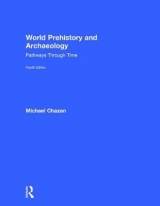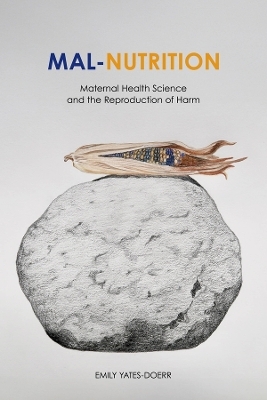
World Prehistory and Archaeology
Routledge (Verlag)
978-0-205-95351-6 (ISBN)
- Titel erscheint in neuer Auflage
- Artikel merken
World Prehistory and Archaeology: Pathways through Time, third edition, provides an integrated discussion of world prehistory and archaeological methods. This text emphasizes the relevance of how we know and what we know about our human prehistory. A cornerstone of World Prehistory and Archaeology is the discussion of prehistory as an active process of discovery. Methodological issues are addressed throughout the text to engage readers.
Archaeological methods are introduced in the first two chapters. Succeeding chapters then address the question of how we know the past to provide an integrated presentation of prehistory. The third edition involves readers in the current state of archaeological research, revealing how archaeologists work and interpret what they find. Through the coverage of various new research, author Michael Chazan shows how archaeology is truly a global discipline. Learning Goals Upon completing this book, readers will be able to:
* Gain new perspectives and insights into who we are and how our world came into being.
* Think about humanity from the perspective of archaeology.
* Appreciate the importance of the archaeological record for understanding contemporary society.
Michael Chazan is an Associate Professor in the Department of Anthropology and the Director of the Archaeology Centre at the University of Toronto. He earned his Ph.D. in anthropology at Yale University. Before coming to Toronto, Dr. Chazan was a postdoctoral fellow with the Centre National de la Recherche Scientifique in Paris and at the Hebrew University in Jerusalem. Among his field experience are excavations in New Jersey, France, Israel, Jordan, Egypt, and South Africa. Dr. Chazan's publications include a monograph on the Lower Paleolithic site of Holon, Israel, coauthored with Liora Kolska-Horwitz. Dr. Chazan is currently engaged in a project on the Earlier Stone Age of South Africa. The project pulls together an international team of researchers to study a series of spectacular sites located in the Northern Cape Province.
Glossary In this Section: 1) Brief Table of Contents 2) Full Table of Contents BRIEF TABLE OF CONTENTS: Part One: The Past Is A Foreign Country: Getting From Here To There Chapter 1. Getting Started in Archaeology Chapter 2. Putting the Picture Together Part Two: Human Evolution Chapter 3. Early Hominins Chapter 4. From Homo erectus to Neanderthals Chapter 5. The Origin of Modern Humans Chapter 6. The Peopling of Australia and The New World Part Three: Perspectives On Agriculture Chapter 7. Towers, Villages, and Longhouses Chapter 8. Mounds and Maize Chapter 9. A Feast of Diversity Part Four: The Development Of Social Complexity Chapter 10. Complexity Without The State Chapter 11. Cities and Pyramids: Early States Of Mesopotamia And Egypt Chapter 12. Enigmas and Diversity: Early States In Europe And Asia Chapter 13. From City to Empire: Social Complexity In Mesoamerica Chapter 14. Bringing the Four Parts Together: States And Empire In The Andes Epilogue Bringing It Back Home Appendices References Credits Name Index Subject Index FULL CONTENTS Part One: The Past Is A Foreign Country: Getting From Here To There Chapter 1. Getting Started In Archaeology 1.1 Reading the Landscape 1.2 Excavation 1.3 Artifacts and Ecofacts 1.4 Biases in Preservation 1.5 Quantification and Sampling 1.6 Creating a Chronology 1.7 Comparison 1.8 Conservation and Display Chapter 2. Putting The Picture Together 2.1 Origins of Archaeology 2.2 The Emergence of Archaeology 2.3 Developing Method and Theory 2.4 Archaeology as Science 2.5 Alternative Perspectives 2.6 Archaeology at the Trowel's Edge Part Two: Human Evolution Chapter 3. Early Hominins 3.1 The Fossil Record 3.2 Setting the Scene 3.3 The Origin of Tool Use 3.4 Hunting and Sharing Food 3.5 The Expansion of the Hominin World Chapter 4. From Homo erectus To Neanderthals 4.1 Defining the Ice Age 4.2 Before the Neanderthals 4.3 Neanderthals 4.4 Aspects of Neanderthal Culture and Adaptation Chapter 5. The Origin Of Modern Humans 5.1 What Is a Modern Human? 5.2 Early Modern Humans in Africa 5.3 Early Modern Humans in the Middle East 5.4 The Arrival of Modern Humans in Europe and the Fate of the Neanderthals 5.5 The Upper Paleolithic 5.6 Explaining the Upper Paleolithic Chapter 6. The Peopling Of Australia And The New World 6.1 Modern Humans in East Asia 6.2 Australia 6.3 The New World Part Three: Perspectives On Agriculture Chapter 7. Towers, Villages, And Longhouses 7.1 Setting the Scene 7.2 Stage 1: Kebaran and Geometric Kebaran 7.3 Stage 2: The Natufian 7.4 Stage 3: The Early Neolithic 7.5 Stage 4: Late Neolithic 7.6 Assessing the Neolithic Revolution 7.7 The Spread of Agriculture to Europe Chapter 8. Mounds And Maize 8.1 Plant Domestication in Mesoamerica 8.2 Maize Agriculture in the 8.3 Eastern North America Chapter 9. A Feast Of Diversity 9.1 Africa 9.2 New Guinea 9.3 The Andes 9.4 East Asia Part Four: The Development Of Social Complexity Chapter 10. Complexity Without The State 10.1 Stonehenge 10.2 Pueblo Bonito, Chaco Canyon 10.3 Cahokia 10.4 Great Zimbabwe 10.5 Comparative Perspectives Chapter 11. Cities And Pyramids: Early States Of Mesopotamia And Egypt 11.1 Mesopotamia 11.2 Egypt 11.3 Africa beyond the Nile Valley Chapter 12. Enigmas And Diversity: Early States In Europe And Asia 12.1 The Indus Valley 12.2 China 12.3 Beyond the Chinese Boundary: Japan, Central Asia, and Cambodia Chapter 13. From City To Empire: Social Complexity In Mesoamerica 13.1 The origins of Urbanism and Social Complexity 13.2 TeotihaucGBPn 13.3 The Maya 13.4 The Aztec Chapter 14. Bringing The Four Parts Together: States And Empire In The Andes 14.1 ChavEn de HuGBPntar 14.2 Nasca and Moche 14.3 The Inca Empire Epilogue Bringing it Back Home Appendices Glossary References Credits Name Index Subject Index
| Verlagsort | London |
|---|---|
| Sprache | englisch |
| Maße | 216 x 279 mm |
| Gewicht | 907 g |
| Themenwelt | Geisteswissenschaften ► Archäologie |
| Sozialwissenschaften ► Soziologie | |
| ISBN-10 | 0-205-95351-4 / 0205953514 |
| ISBN-13 | 978-0-205-95351-6 / 9780205953516 |
| Zustand | Neuware |
| Informationen gemäß Produktsicherheitsverordnung (GPSR) | |
| Haben Sie eine Frage zum Produkt? |
aus dem Bereich



